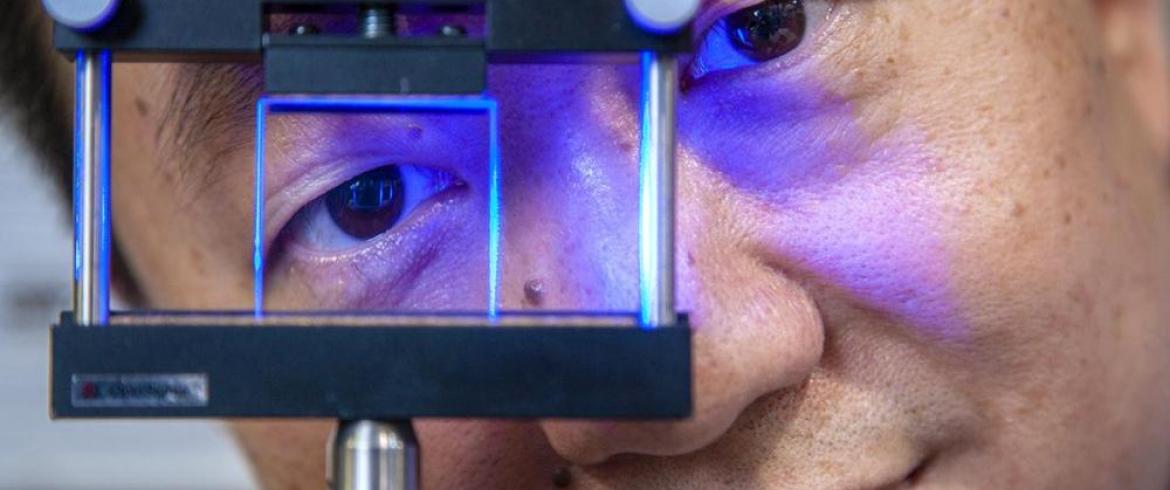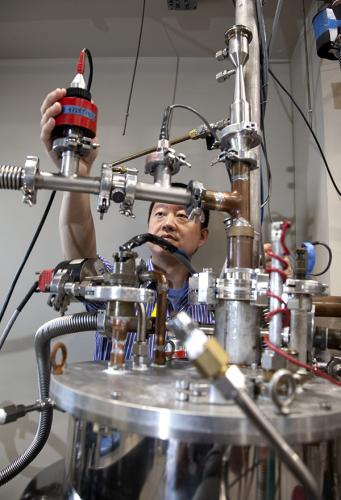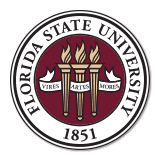
Engineering scientists develop new tools to make superconductor particle accelerators safer
In 2008, the Large Hadron Collider in Switzerland exploded. This is one of the most powerful particle accelerators ever built. A faulty connection caused some magnets to overheat and melt, triggering an explosion of pressurized helium gas. Accidents like this are very dangerous and are very costly in terms of time, money and of course the possibility of human fatality.
FAMU-FSU Engineering professor, Wei Guo, and his team are using cryogenics to study liquid helium and its use related to superconducting particle accelerators, to make them safer and more efficient. Guo is the Director of the Cryogenics Lab located in the National High Magnetic Field Laboratory (NHMFL).
“This is a vastly different world from our ordinary experience,” Guo said. “Particles can go very fast, can collide and reveal their internal structure. These particles are essentially the building blocks of everything.”
Guo is referring to the world of particle accelerators. These gigantic instruments use superconducting magnets and cavities to accelerate particles. They can get into the superconducting state, a phenomenon of zero electrical resistance, only if they are cooled down by liquid helium to the extremely low temperature of about −270 °C.
Typical particle accelerators are composed of interconnected chambers called cryomodules with a length up to several kilometers. These cryomodules have two vacuum spaces: one for providing insulation for a liquid helium bath where the superconducting magnets and cavities sit, and the other is the center of the linked cavities where the particles travel. If either vacuum space breaks, the liquid helium can rapidly boil and the cryomodules may explode due to overpressure.
In the United States, several institutions support high energy physics and have particle accelerators. These labs are funded in part by the U.S. Department of Energy (DOE). DOE has a vested interest in the safe operation of these facilities and provided a $600,000 grant to study several projects in the Cryogenics Lab operated by Guo and his team.
One project supported by DOE is to study “Sudden vacuum loss in helium-cooled tubes.” Guo and his team have set up a unique model system for experimentation. This model system uses a vacuum tube that is immersed in liquid helium and connected, through a fast-acting solenoid valve, to a gas reservoir at known gas pressure and density. By setting up a controlled failure experiment, these scientists calculate metrics involving airflow and heat deposit. This type of information is valuable and is relevant to the safe operation of those systems.
Another project supported by DOE is called “Quench spot detection.” Many modern particle accelerators utilize superconducting cavities to accelerate charged particles. There is a strong demand to reach higher accelerating fields in these cavities so that the particles can gain higher energies over shorter distances. The prospect of shorter accelerator beamlines is significant due to their high costs, on the order of 1 billion U.S. dollars per mile. The maximum accelerating field is limited by cavity quenching caused by heating from tiny surface defects called quench spots. By locating and subsequently removing those defects, the maximum accelerating field can be significantly improved. There is a long-standing research effort in the accelerator field is to develop reliable methods to detect those sub-millimeter defects.

“The technique we plan to use is the molecular tagging velocimetry (MTV) method that we developed in our lab,” Guo said. “We are the only lab that is capable of performing MTV in helium in the world. Some groups in the U.S. and other countries are considering to construct a similar set up to ours, so we will be involved in some collaboration to help them set up their systems.”
This MTV tool involves the use of extremely short laser pulses to “write” molecular tracer lines in liquid helium and image these lines via laser-induced fluorescence. When a hot spot on a solid surface injects heat in liquid helium, these tracer lines deform. Their three-dimensional deformed profiles contain accurate information about the hot spot location.
In addition to tools and methods for particle accelerators, Guo talked about the educational opportunities at the Cryogenics Lab and the relation of proper training to support the safe operation of these facilities.
“Safe operation of these accelerators also needs properly trained cryogenic engineers,” Guo said. “We are developing tools to help the accelerators run more efficiently and safer but you have to have properly trained engineers to operate the systems. This is essential to the mission.”
Cryogenics research is supportive research for many technologies, but the number of researchers engaged in this type of work in the U.S. is limited. The Cryogenics Lab at the university is among the very few places in the U.S. where students can get training in this field.
“We offer opportunities for both graduate and undergraduate students. Very often, before our students have the opportunity to graduate they get job offers from major accelerator labs and companies who use cryogens,” Guo said.
Learn more about Guo's Cryogen lab at the NHMFL or his Engineering lab page.

